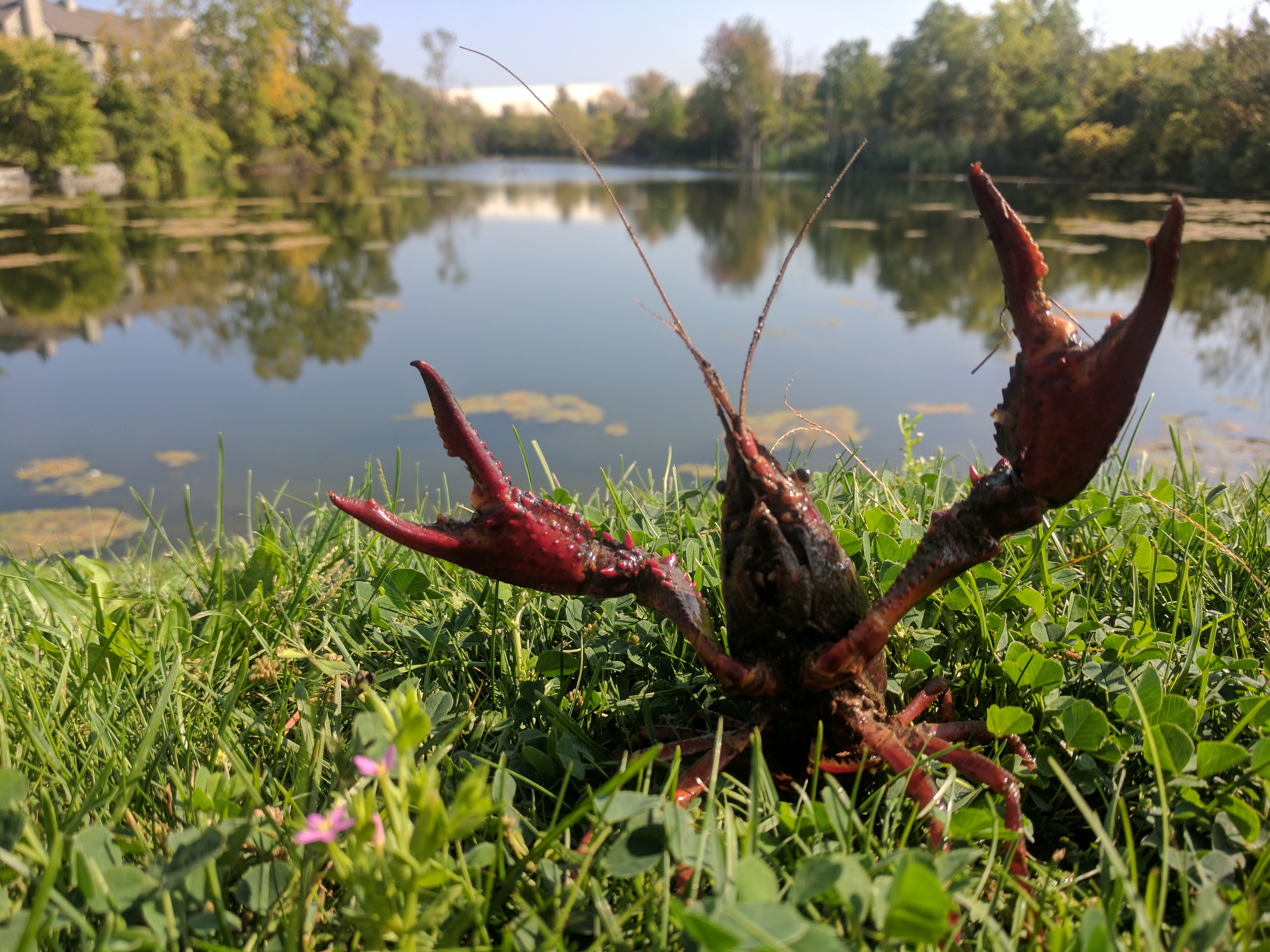Fisheries and wildlife researcher partners with MDNR to study red swamp crayfish
Focusing on eradicating emerging invasive species

Michigan State University Department of Fisheries and Wildlife researcher Brian Roth has his sights set on an emerging issue for Michigan’s rivers, lakes and streams – the red swamp crayfish.
Partnering with the Michigan Department of Natural Resources (MDNR), United States Geological Survey, Cooperative Invasive Species Management Areas, Gun Lake Tribe and Auburn University, Roth is working to determine the best way to eradicate or control crayfish which aggressively compete with native crayfish species for food and territory.

The crustaceans present many unknowns that Roth is trying to answer, such as: What is the best life stage to eradicate the species? What geographic areas should be a focus? Should source populations be eradicated first?
“This is a relatively new invasive species. We hadn't confirmed any established populations until late summer 2017,” said Roth, an associate professor for the MSU Department of Fisheries and Wildlife.
“One of the really critical aspects of the red swamp crayfish invasion is establishing their effect. If they don't really present any impact on the ecosystem, then maybe we would be doing more damage by trying to eradicate them. We need to show impact to justify any potential management actions, and that's where my work falls – to inform management actions that may occur.”
Roth is working with MDNR to develop a strategic plan to address the invasion. Researchers have found as many as 33 water bodies around the state that contain red swamp crayfish which resemble small lobsters and range in size from 2.5 to 4.5 inches. Through trapping, the team collected more than 93,000.
“Michigan DNR and MSU have been working closely on statewide efforts for red swamp crayfish, including assessment of live trades as introduction pathways, early detection and monitoring, and implementation and evaluation of eradication methods,” said Lucas R. Nathan, Ph.D. Aquatic Invasive Species Coordinator.
“As part of this work, Dr. Roth has provided his expertise on crayfish biology and sampling methods. He has also supervised numerous graduate student projects and field crews, which have increased the overall capacity for implementing the statewide response plan.”
Roth emphasized that MSU and MDNR are just cracking the surface on what is to be learned.
“Most people wouldn't even suspect that red swamp crayfish could survive in Michigan. It seems like it should be too cold here,” Roth said. “They're native to places like Louisiana, and maybe as far north as St. Louis. But they are doing more than fine in Michigan. We don't know whether climate change has had some role in that.”
Management methods vary for the red swamp crayfish, including trapping, eradication through chemical controls and novel methods being explored in partnership with MSU Department of Biosystems and Agricultural Engineering researcher Wei Liao. He is using MRI scans to see how the crayfish respond to sound.
“We didn't really know this, but crustaceans will respond to sound,” Roth said. “They have sensory hairs that can pick up the vibration from sounds. What we’ve figured out is that you can actually herd crayfish using sound. And we found if you use both bait and sound together, you actually get an additive effect to increase how many crayfish that you're catching on a given day, which is great for control.”
The team is also experimenting with telemetry – using tracking devices on the crayfish to see if they're moving from pond to pond or whether they’re burrowing at certain times of the year.
Roth’s research program has two major themes: predator prey dynamics in aquatic systems and invasions of aquatic animals.
“I try to mesh those two things as much as I possibly can. If I'm working on invasion, I usually focus on the role of predator/prey interactions in those invasions. Likewise, if I'm studying predator/prey interactions, I tend to look at how invasive species tend to alter those interactions,” he said.
“All of my work is heavily applied, so I work really closely with management agencies so the research I do is not separate from the management actions, but contributes to management of aquatic ecosystems.”
Roth’s research has benefitted several DNR projects in the past.
“Dr. Roth has also worked with the DNR to implement a fish predator diet study throughout the Great Lakes that is used to inform management strategies for Great Lakes fisheries. Specifically, the information from this project is beneficial to the DNR and others for informing stocking decisions for salmon and lake trout in the Great Lakes,” Nathan said.
“Additionally, Dr. Roth worked with the DNR to evaluate walleye population dynamics and diet in the Inland Waterway. The study documented how walleye were incorporating nonnative fish into their diets.”



 Print
Print Email
Email





